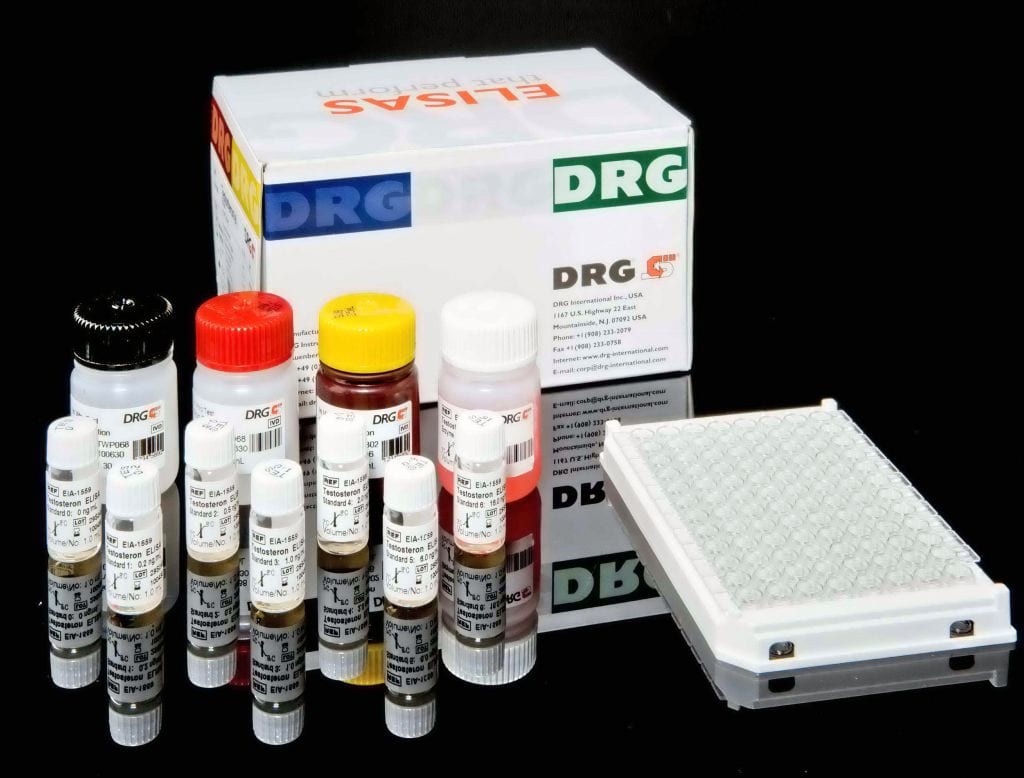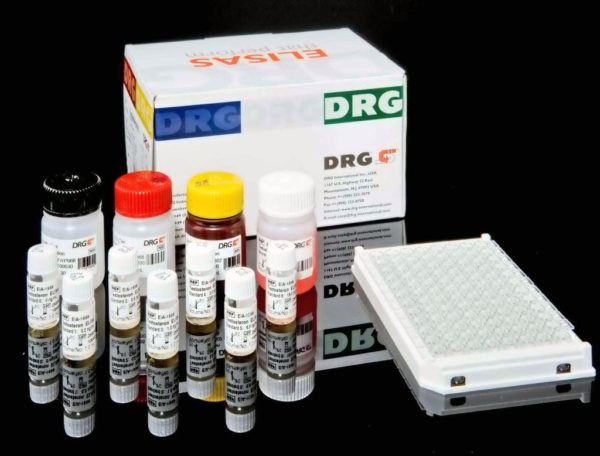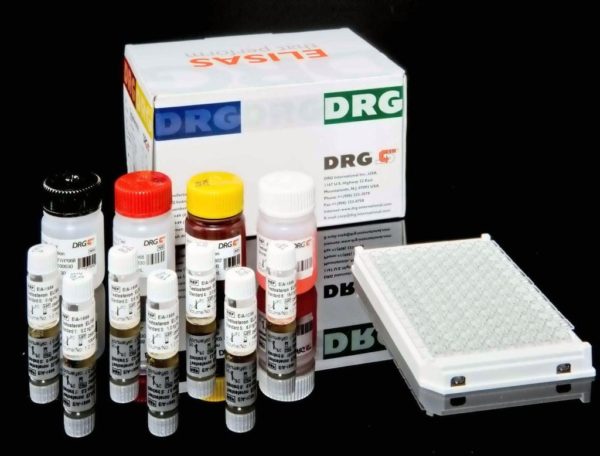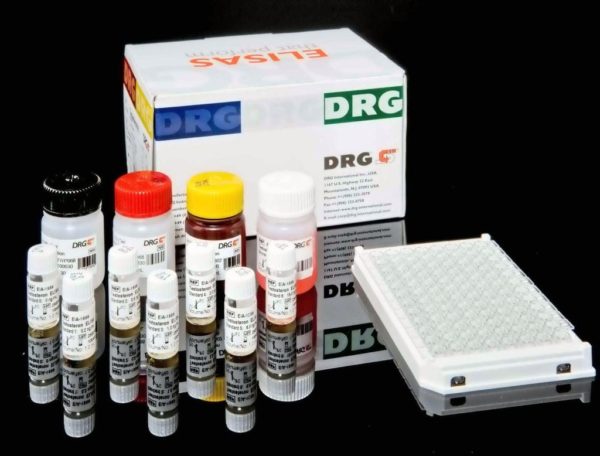Description
The DRG Toxoplasma gondii IgG Enzyme Immunoassay Kit provides materials for the quantitative and qualitative determination of IgG-class antibodies to Toxoplasma gondii in human serum and plasma.
This assay is intended for in vitro diagnostic use only.
Toxoplasma gondii is a small intracellular parasite, whose life cycle has a sexual and an asexual phase. Sexual development is restricted to the intestinal cells of (probably exclusively) cats; the oocysts formed are excreted and due to their resistant cell walls they may be infectious under advantageous circumstances for at least 1 year. Animals and man are intermediate hosts for the asexual proliferation of T. gondii: the ingested parasites will proliferate explosively within the host cells lysing them eventually. They disseminate throughout the body via circulation and lymphatic system and may infect any cell type. In muscle and brain cells cysts are formed which are spheroidal and about 5-100 µm in diameter. Cysts are virtually impossible to be killed in the intermediate host. Toxoplasma gondii is the most common parasite in humans, but its prevalence (7-80%) is highly dependent on the geographic area, the socioeconomic status and the nutritional customs. Infection only rarely causes toxoplasmosis and usually clinical symptoms are absent, but may produce severe problems in immunosuppressed persons and the fetus. Because only a primary infection during pregnancy may be dangerous and even fatal for the unborn (the probability of congenital infection is about 50%), the recent onset of an infection must be excluded.In immunosuppressed patients toxoplasmosis causes severe complications mostly by reactivation of an earlier latent infection. Infection may be identified by PCR, indirect immunofluorescence (IIF), Serology: detection of antibody production by ELISA.
The DRG Toxoplasma gondii IgG ELISA Kit is a solid phase enzyme-linked immunosorbent assay (ELISA) Microtiter wells as a solid phase are coated with inactivated Toxoplasma gondii soluble antigen (strain RH). Diluted patient specimens and ready-for-use controls are pipetted into these wells. During incubation Toxoplasma gondii-specific antibodies of positive specimens and controls are bound to the immobilized antigens. After a washing step to remove unbound sample and control material horseradish peroxidase
conjugated anti-human IgG antibodies are dispensed into the wells. During a second incubation this anti_IgG conjugate binds specifically to IgG antibodies resulting in the formation of enzyme-linked immune complexes. After a second washing step to remove unbound conjugate the immune complexes formed (in case of positive results) are detected by incubation with TMB substrate and development of a blue color. The blue color turns into yellow by stopping the enzymatic indicator reaction with sulfuric acid. The intensity of this color is directly proportional to the amount of Toxoplasma gondii-specific IgG antibody in the patient specimen. Absorbance at 450 nm is read using an ELISA microtiter plate reader.




